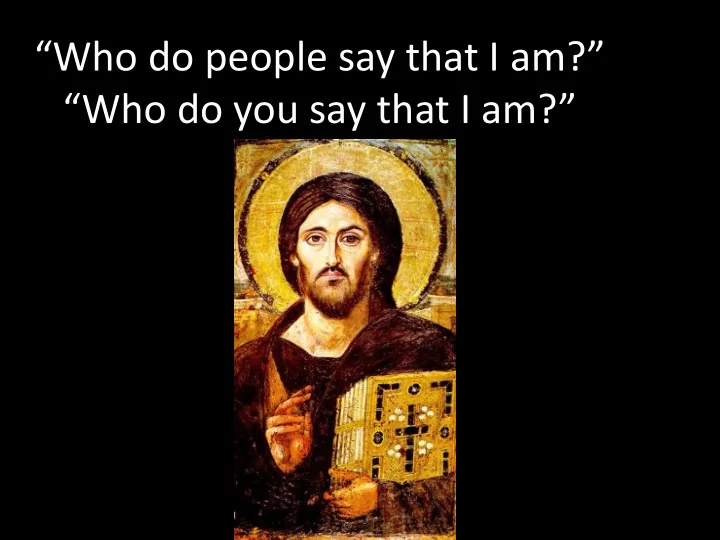

“Who do people say that I am?” “Who do you say that I am?”
Christ and Adam Jesus and the Old Testament
The Revelation of Jesus in the New Testament
Who Do You Say that I am? The Church’s Answer: - Fully Divine - Fully Human - One Person/Two Natures
Early Heresies: • Gnostic heresy: Docetism (1 John ) • Ebionism • Sabellianism/paterpassionists • Adoptionism
The Early Church: Post Constantine Heresies Arianism and St Athanasius; the Council of Nicea (325 AD) The First Axiom of Orthodoxy: “Only God can save”
Apollinarianism and St Gregory Nanzianzen The Second Axiom of Orthodoxy: “ All that is not assumed is not saved.”
Nestorianism and St Cyril of Alexandria; the Council of Ephesus (431 AD)
Monophysitism (Eutyches); the Council of Chalcedon (451 AD)(Pope St Leo the Great)
• Following the holy Fathers, we unanimously teach and confess one and the same Son, our Lord Jesus Christ: the same perfect in divinity and perfect in humanity, the same truly God and truly man, composed of rational soul and body; consubstantial with the Father as to his divinity and consubstantial with us as to his humanity; "like us in all things but sin". He was begotten from the Father before all ages as to his divinity and in these last days, for us and for our salvation, was born as to his humanity of the virgin Mary, the Mother of God.
¡ We confess that one and the same Christ, Lord, and only-begotten Son, is to be acknowledged in two natures without confusion, change, division or separation. The distinction between the natures was never abolished by their union, but rather the character proper to each of the two natures was preserved as they came together in one person ( prosopon ) and one hypostasis. (CCC #467)
Monothelitism/Monerg -ism and St Maximus the Confessor; the Third Council of Constantinople (681 AD)
Revelation of the Trinity Divine Persons in NT a. The Father b. The Son c. The Holy Spirit
Essential Elements of the Doctrine of the Trinity Trinitarian Heresies: Tritheism, Subordinationism - Modalism, (Sabellianism/Patripassionism),) - The Dogma of the Holy Trinity Essence (Oneness) - Person (Distinction: Father, Son, Holy Spirit) - Relation (Paternity, Filiation, Spiration, Procession) -
Basic Principles a. Person as subsitent relation i. Relation as relative ii. opposition Procession/origin of the iii. persons Trinity as alterity b. Person, Being, and c. Perichoresis The level of essence i. The level of relation ii. d. An Impassible /Immutable Trinity
Trinity and the Human Person The Imago Dei The Human Person: A knowing and Loving being
Trinity and the Human Person The Psychological Analogy of the Trinity - Intellect and Will - The Word (knowldege) and Love
Recommend
More recommend